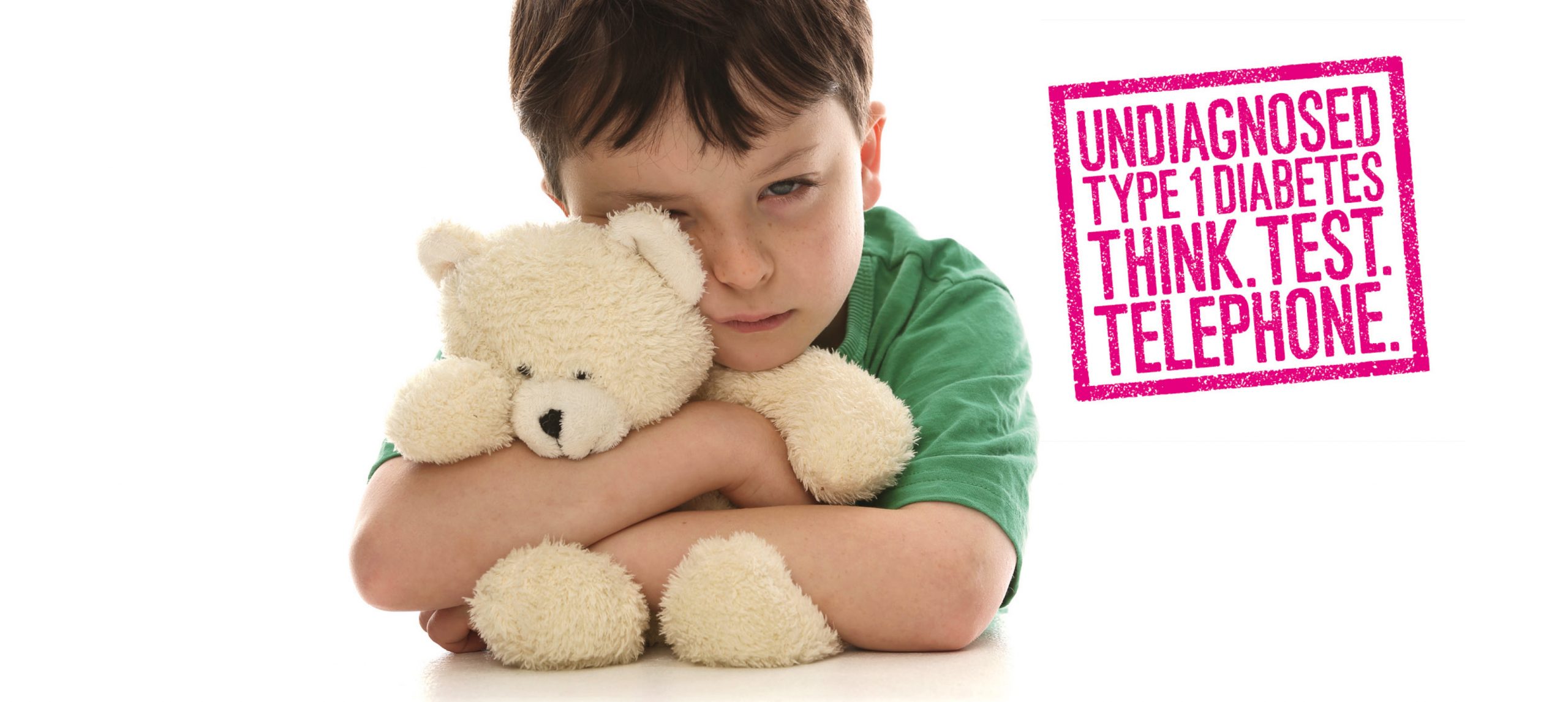Overview – DKA awareness campaign
Each year in the UK more than 10 children die from ketoacidosis and a similar number suffer permanent neurological disability. Type 1 diabetes may occur at any age, and in Scotland approximately 300 new cases under the age of 16 years are diagnosed annually – More than one in every four of these children present in ketoacidosis, and this increases to one in three for those under five years of age.
Diabetic ketoacidosis is preventable if diabetes is diagnosed and treated sufficiently early. Unfortunately this is often not the case, and one third of children with new-onset diabetes have had at least one medical-related visit prior to diagnosis. This represents a ‘missed opportunity’ for early recognition, testing, diagnosis and treatment.

Brief
To develop a health-awareness campaign to educate people about the symptoms of Type 1 diabetes in children – excessive thirst, frequent urination, tiredness and losing weight – as well as instilling the importance of prompt medical attention when these symptoms are recognised. The primary audience for the campaign was GPs, with the secondary audience being A&E, hospital wards and other non-specialist healthcare professionals such as Practice Nurses, who need to diagnose children sooner before the situation becomes life-threatening.
Deliverables:
– Art direction
– OOH advertising
– Copywriting
– Social advertising
– Print
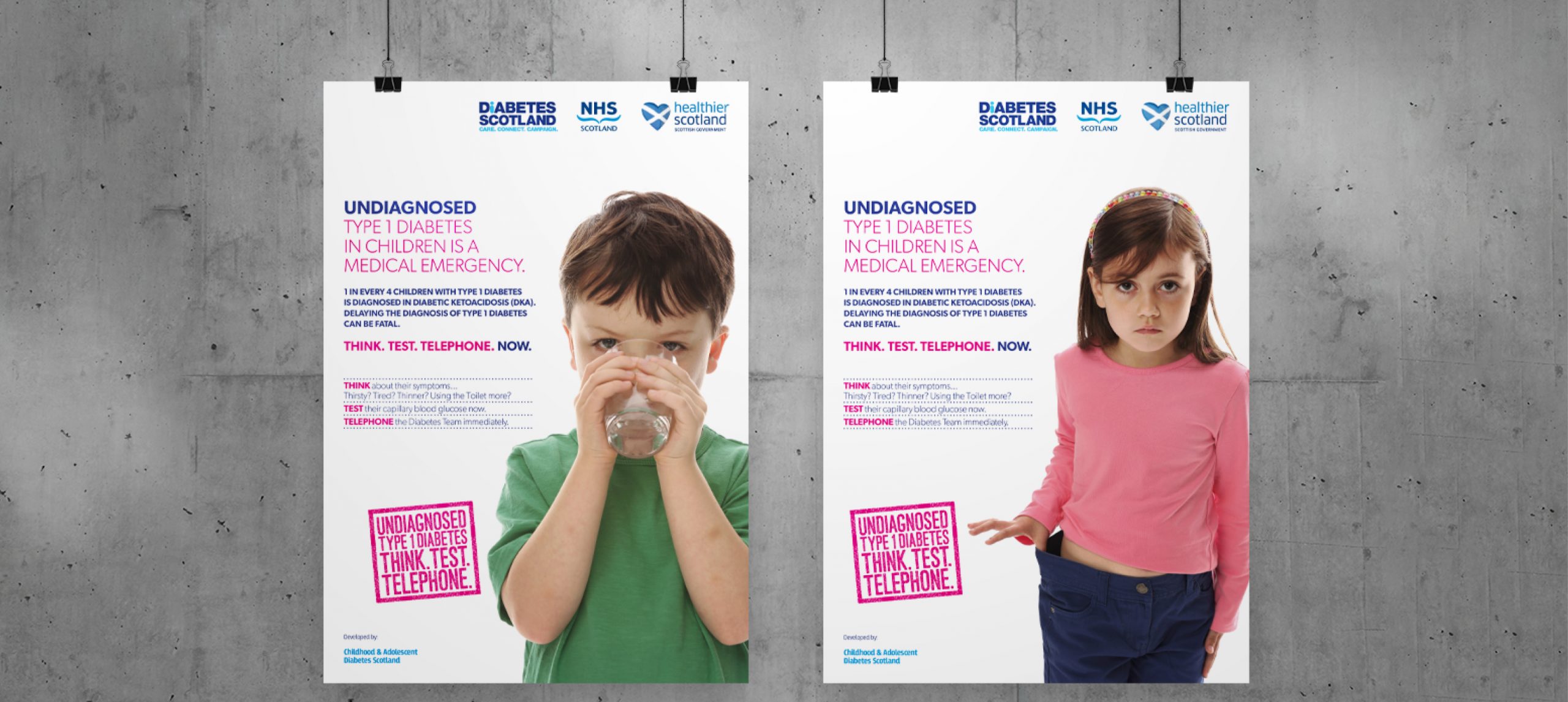
Approach
The campaign was built around the strapline ‘Think. Test. Telephone.’ – a direct and memorable call-to-action and referral pathway for all healthcare professionals to adopt when managing a child presenting symptoms of early onset Type 1 diabetes. A photoshoot of ‘real’ children with diabetes provided authenticity to the campaign and demonstrated the symptoms of thirst, weight loss and tiredness.
To address concerns about potentially conveying a specific ‘age’ or ‘gender’ perception, diverse posters were disseminated in healthcare settings. The campaign materials, including a booklet, exhibition stand, and various publicity items, prioritized plain language over medical jargon, ensuring accessibility for all audiences.
The campaign successfully launched across all GP practices in Scotland, receiving overwhelmingly positive feedback. Its effectiveness led NHS Scotland to adopt it as their annual national DKA Awareness communications campaign, demonstrating its sustained impact on raising awareness and promoting early intervention for Type 1 diabetes.
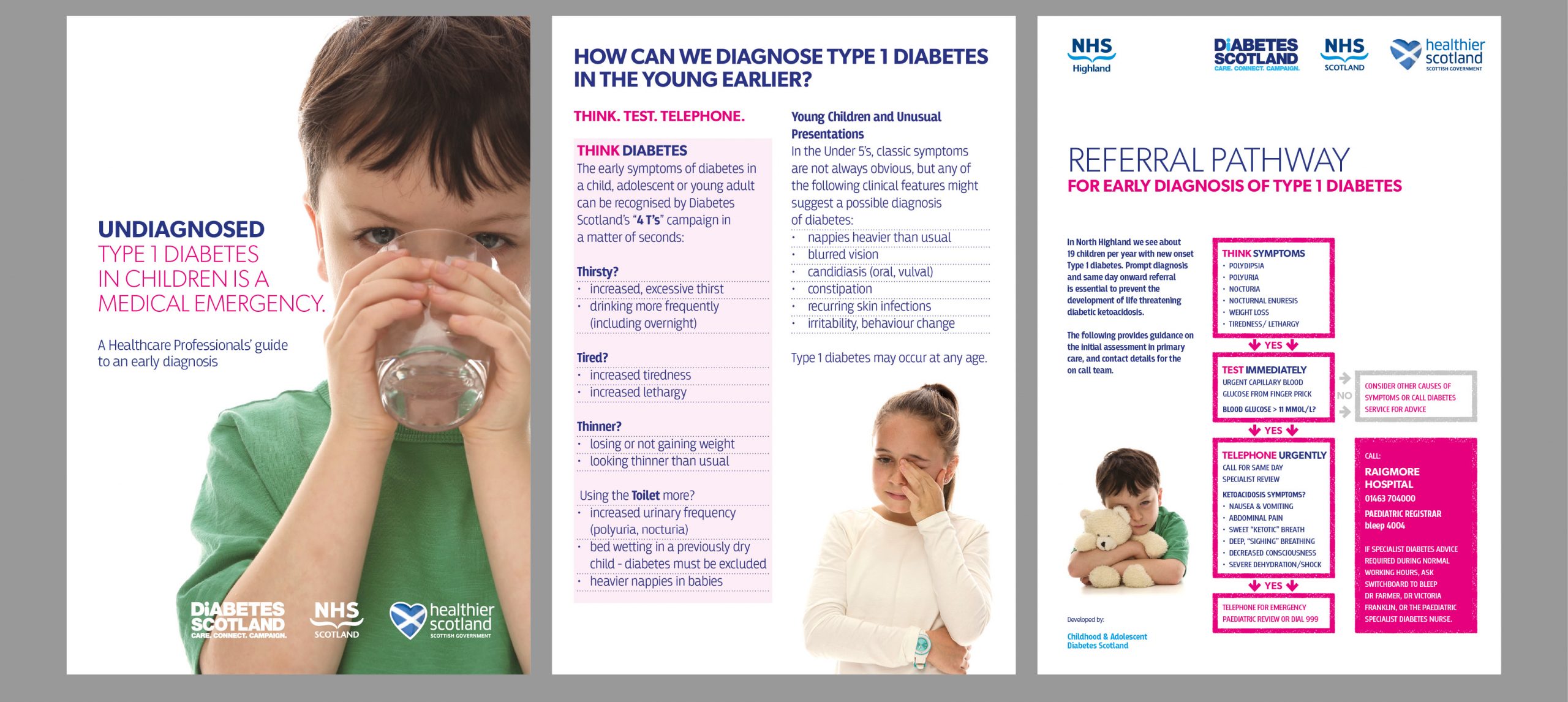
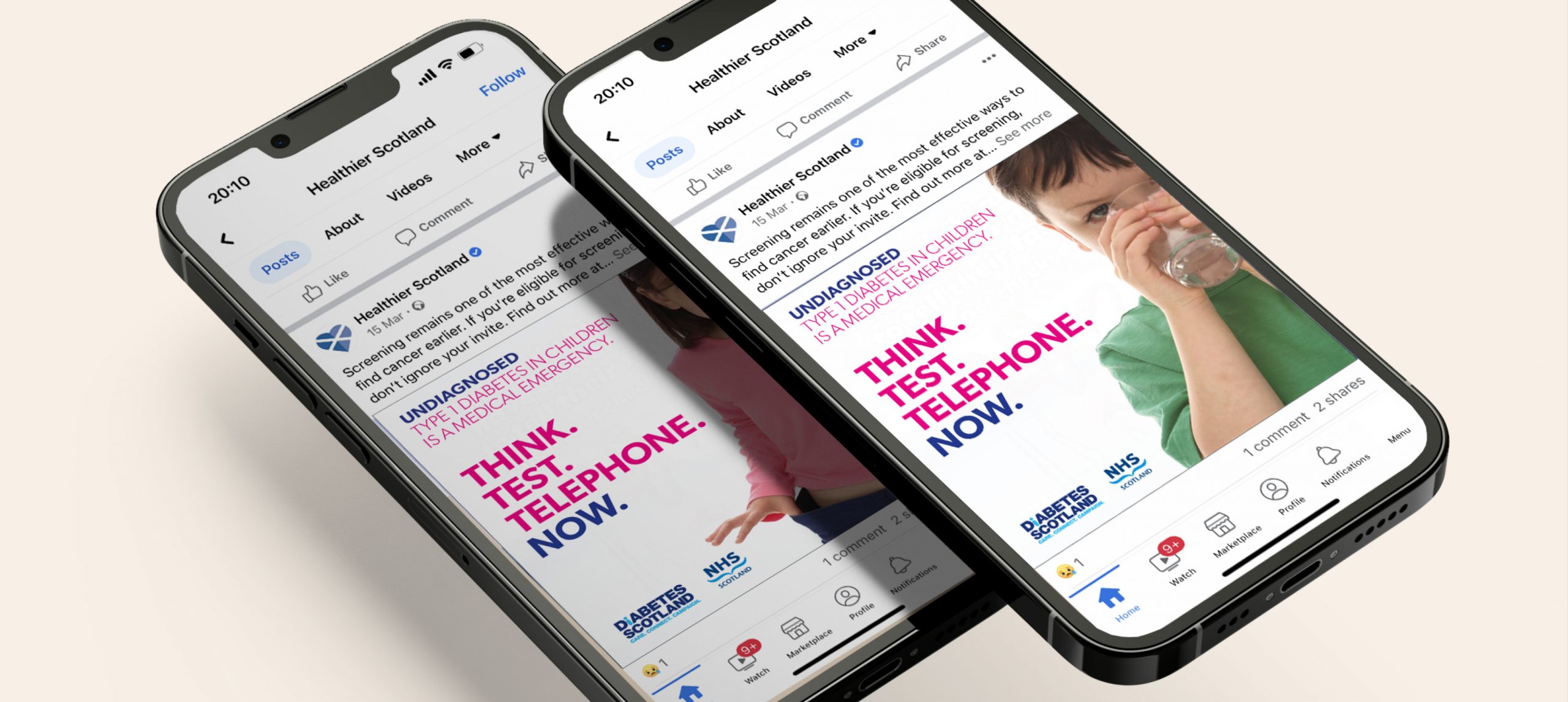
Overview – Smoking with diabetes awareness campaign
Hospitals are frequently seeing individuals presenting with health issues stemming from the intersection of smoking and diabetes. Addressing the intertwined issues of smoking and diabetes becomes crucial in the hospital setting, necessitating comprehensive care strategies that not only manage diabetes but also support smoking cessation to mitigate further health deterioration.
The proven health risks associated with smoking if you have diabetes are extremely serious and can alter a persons life in an acutely severe way – heart attack, stroke and limb amputation are some of devastating complications they can face.
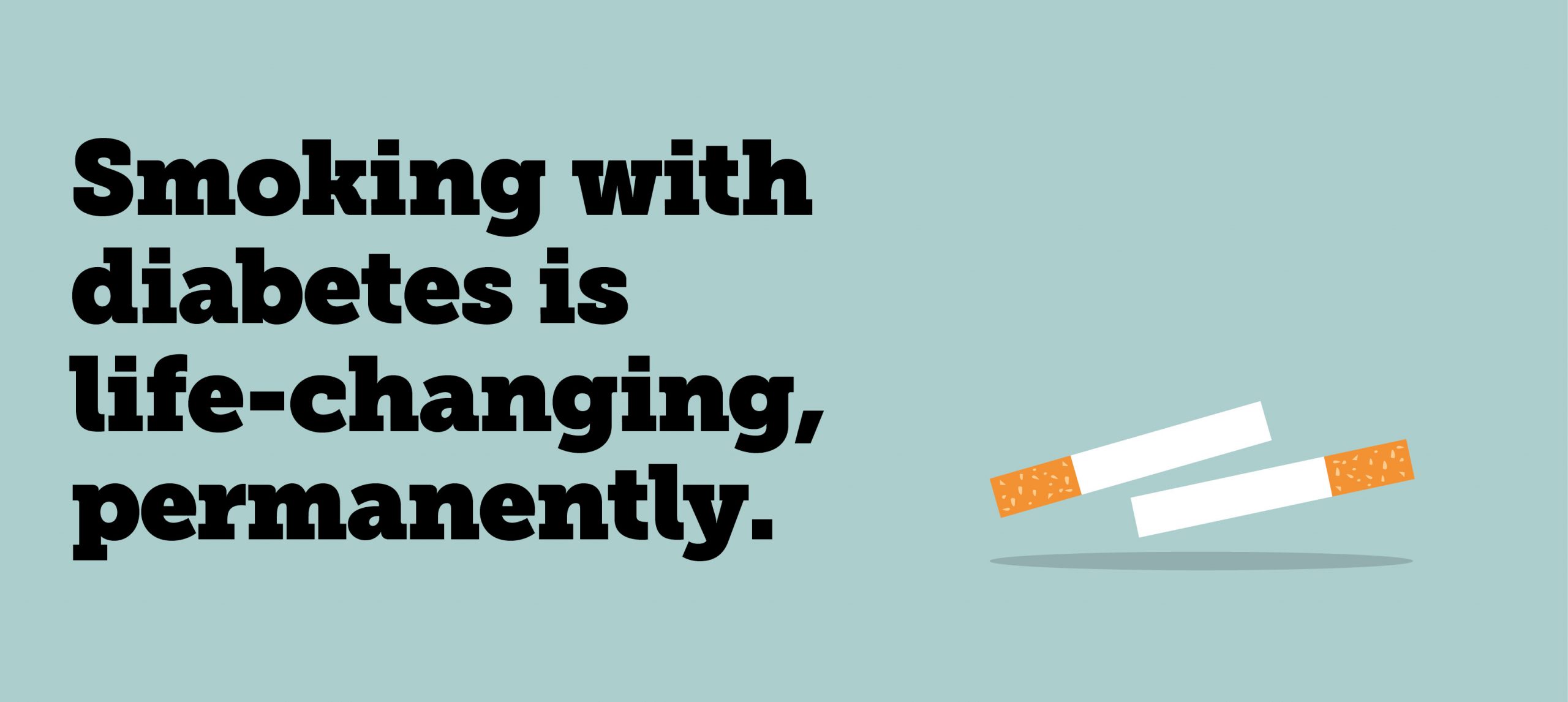
Brief
To develop a health-awareness campaign of the risks associated from smoking with diabetes and increase referrals to the smoking cessation service within the NHS.
Deliverables:
– Art direction
– Illustration
– OOH advertising
– Copywriting
– Social advertising
– Print
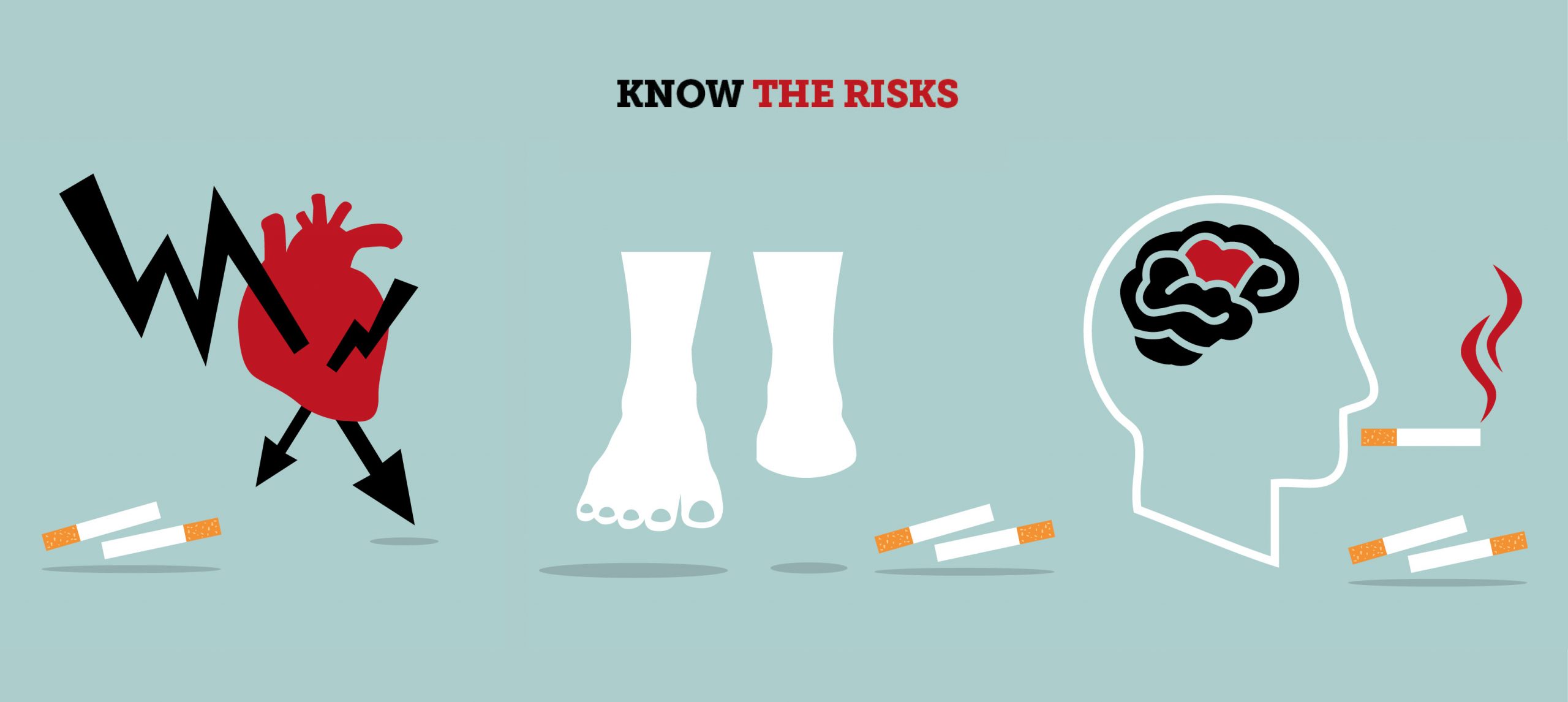
Approach
A series of simple graphic illustrations depicting the risk of smoking were developed – these referred to the three most prevalent presenting in the NHS. The illustrations targeted a broad scope of patients as they didn’t refer to a gender or age. The risks were obvious and were further reinforced by the accompanying factual statements telling patients the likelihood of risk opposed to a non-smoker.
The clear message from all the research was that the effects could be ‘life-changing’ so this was built into the overarching strapline, before delivering the call-to-action, ‘Call. Quit. Live.’ – used to motivate smokers to call the helpline and commit to quitting so that they can live a better, longer life.
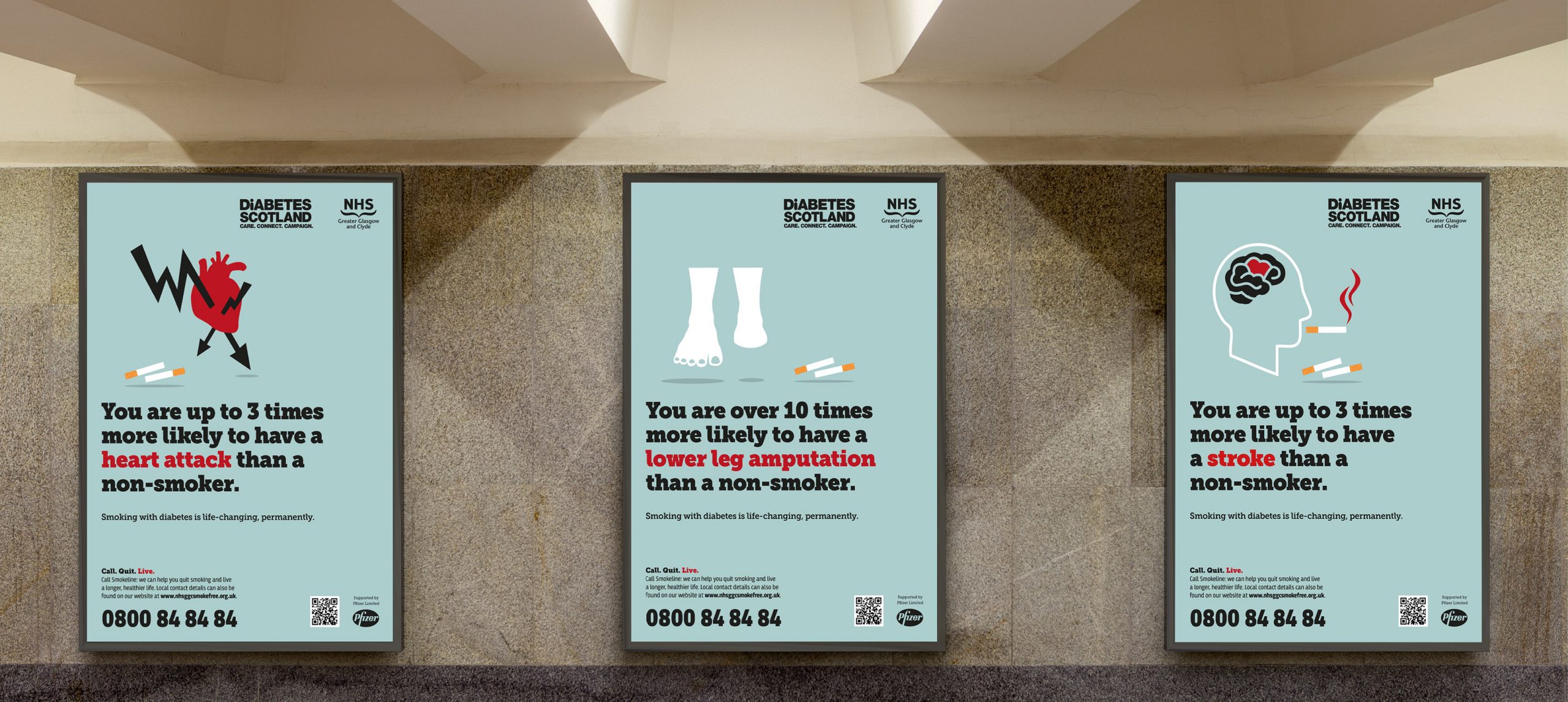
Photographer: Nicki O’Donnell (DKA awareness campaign)
